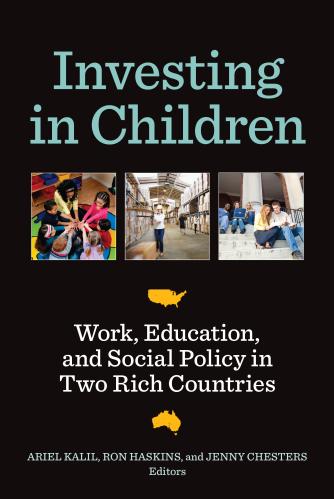Studies in this week’s Hutchins Roundup find that digital footprints are as good at predicting default as conventional credit scores, big data makes large firms more attractive to investors, and more.
Want to receive the Hutchins Roundup as an email? Sign up here to get it in your inbox every Thursday.
Digital footprints are as good at predicting defaults as conventional credit scores
Tobias Berg of the Frankfurt School of Finance and Management and co-authors use data on how 250,000 customers of a German e-commerce company accessed the company’s website to predict their likelihood of default on payments for furniture. People who accessed the website from computers were half as likely to default as people who used phones, and Android users were almost twice as likely to default as iOS users. In addition, customers who arrived on the homepage from a price comparison site exhibited lower than average default rates, and people who purchased furniture at night were more likely to default than those who made purchases during regular business hours. Overall, they find that even a simple digital footprint, consisting of 10 easy-to-collect characteristics, predicts defaults as well as a formal credit score. This suggest that fin-tech companies, with their ability to access and process digital footprints, can challenge banks and other financial intermediaries.
Big data makes large firms more attractive to investors
Over the last three decades, employment at U.S. firms with fewer than 100 employees fell from 40 percent to 35 percent of total employment and employment at firms founded in the last five years declined from 18 percent to 8 percent of the total. Juliane Begenau of Stanford University and co-authors argue that investors’ use of big data favors big firms, lowering their cost of capital and helping them grow faster than smaller firms. Larger firms have more economic activity and a longer history, so they offer investors more data, which makes it easier for data-driven investors to value them with confidence. Because small firms provide less data, investors remain uncertain about the risks involved in investing in them.
Households’ debt-repayment explains the effects of credit booms on the real economy
Mathias Drehmann of the Bank for International Settlements and co-authors construct a dataset of household debt in 16 countries from 1980 to 2015 to show that credit booms are followed by economic contractions. Economies boom as households borrow to make purchases of houses, cars, and the like, they find. However, this leaves households with a large stock of debt to repay. Debt repayment peaks four to six years after a credit boom. This, in turn, leads households to reduce spending, leading to an economic contraction. This cycle—where money initially flows from lenders to households and subsequently flows in the other direction—is important to understanding why economies struggle to recover from recessions provoked by debt-related financial crises, the authors say.
Chart of the week: Inflation is nearing the Federal Reserve’s 2 percent target

Quote of the week:
“I am concerned that the looming shadow of student debt, coupled with increasing uncertainty about loan forgiveness programs and income-driven repayment, may dissuade some potential students — particularly those from low- and middle-income families — from going to college or pursuing jobs in public service. And I’m additionally concerned that schools’ budgetary constraints may contribute to fewer of those students succeeding if they do attend,” says Patrick T. Harker, president of the Federal Reserve Bank of Philadelphia.
“The financial considerations for families are fundamental, but there are other, less tangible factors that either erect barriers to entering college or affect students’ success once they’ve enrolled. There are more elements to the school experience than just tuition and books, and campuses around the country have done great work to address that fact. Whether it’s navigating office hours or finding resources like free tutoring, programs that focus on underserved students have been important factors in their success. … Increased cost pressures on institutions may force them to cut or curtail those programs, which would be a great loss, and disproportionately affect lower- and middle-income students.”
The Brookings Institution is committed to quality, independence, and impact.
We are supported by a diverse array of funders. In line with our values and policies, each Brookings publication represents the sole views of its author(s).









Commentary
Hutchins Roundup: Digital footprints predict default, firm size and big data, and more
May 3, 2018